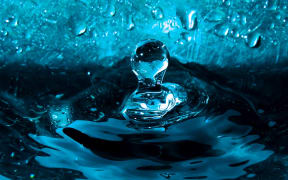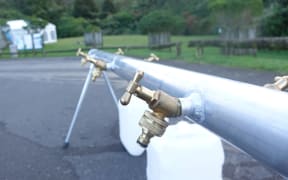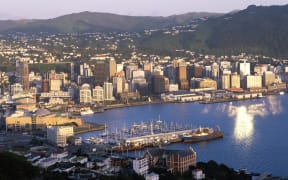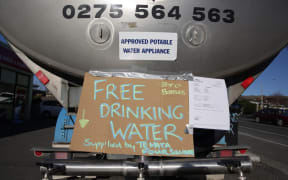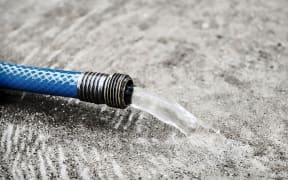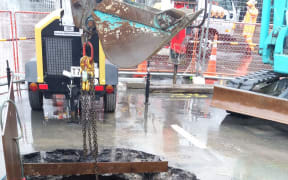A source of freshwater has been found under Wellington Harbour but the quality is not yet clear, the company performing the world-first drilling says.
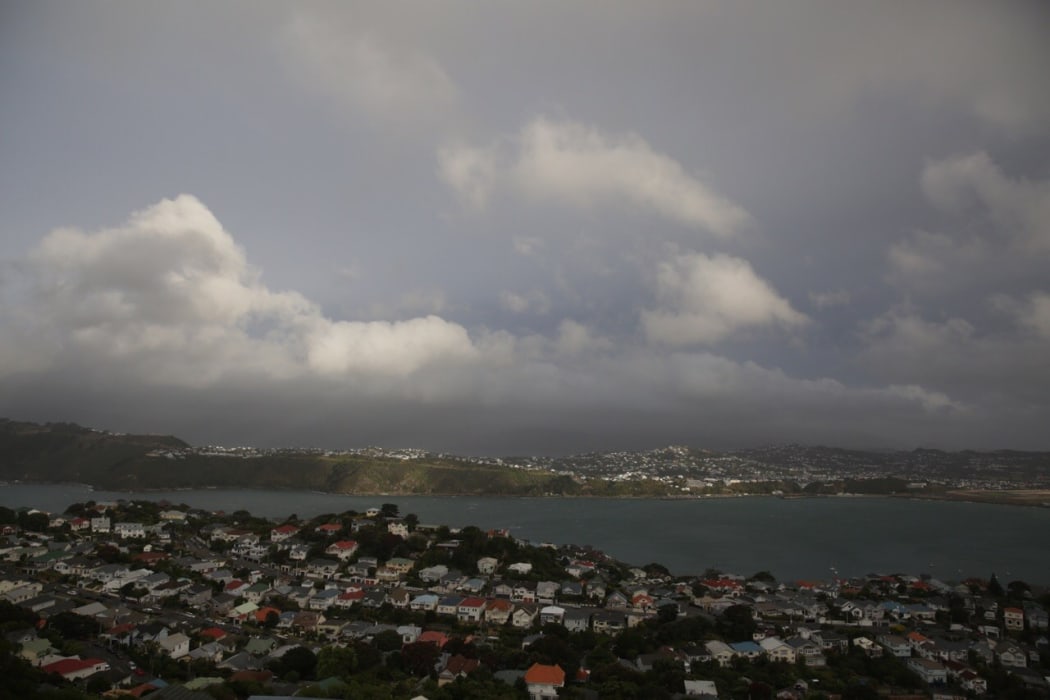
Clouds build on above the hills on Wellington's Miramar Peninsula. Photo: RNZ / Rebekah Parsons-King
Wellington Water said the second drilling attempt, this one about 750m off the northern coast of the Miramar Peninsula, had been a success.
The first attempt started about two weeks ago, but only reached 15m below the sea floor before the barge and drilling rig had to be brought back to port ahead of the storm that hit the region.
There are fears that if Wellington's main water pipelines fail in a major earthquake southern and eastern suburbs of the city could have water cut off for up to 100 days.
Wellington Water chief executive Colin Crampton said last week the drill team found physical proof the Waiwhetu aquifer extended to the entrance of the harbour.
"The drill rig has just reached the top of the aquifer.
"About 50m from the top of the platform here. We've encountered fresh water at the top of the aquifer so that's very promising."
But it was still early days before the city could come to rely on the harbour entry as an access point to water after a major earthquake cut the pipes currently feeding the capital.
Mr Crampton said they would continue drilling a further 30m to confirm previous geological models of the aquifer and send samples away for testing.
"If that's all good then we'll move to the next critical stage which is then to drill further holes to test the quantity of water we can extract from the aquifer to make it an alternative source.
"That's really got to be done very carefully because we're dealing with the Waiwhetu aquifer which supplies Wellington and the city now from Waterloo," he said.
"We've just got to check that we can get the water we're expecting out of it without impacting on the performance of the whole aquifer."
Mr Crampton said it cost about $2.5 million to do the exploratory drilling and test the water samples.
He said if the drilling was a success and the harbour access to the aquifer could be relied on, it was half the price of a cross-harbour pipeline that was proposed.
McMillan Drilling was tasked with providing and operating the machinery.
Its group manager Ian Haycock described the drill.
"It's a jack-up barge so the barge is actually sitting on the sea floor at the moment and about 25m of water.
"So there's the spud legs you can see, there's four of them in each corner. They extend from the current deck level to sea floor."
He said a steel pole was used to contain the drilled hole and avoid any sea water or other contaminants getting into the aquifer.
"Then we have a sea-riser which is a steel pipe that's connected to the barge and that makes its way into the seabed and beyond.
That allows us to run our drilling equipment in and out of the hole and preserve the integrity of the aquifer that we're looking to find and prevent any risk of salt water intrusion."
Once the exploratory hole was complete Wellington Water would pump water from the bore for seven days to check the flow and quality of it.
It was unlikely anything like this had been done before - there was one similar undersea water exploration project in the United States but it was still in its planning stage.
Read or listen to Alison Ballance's short documentary feature about the drilling project
